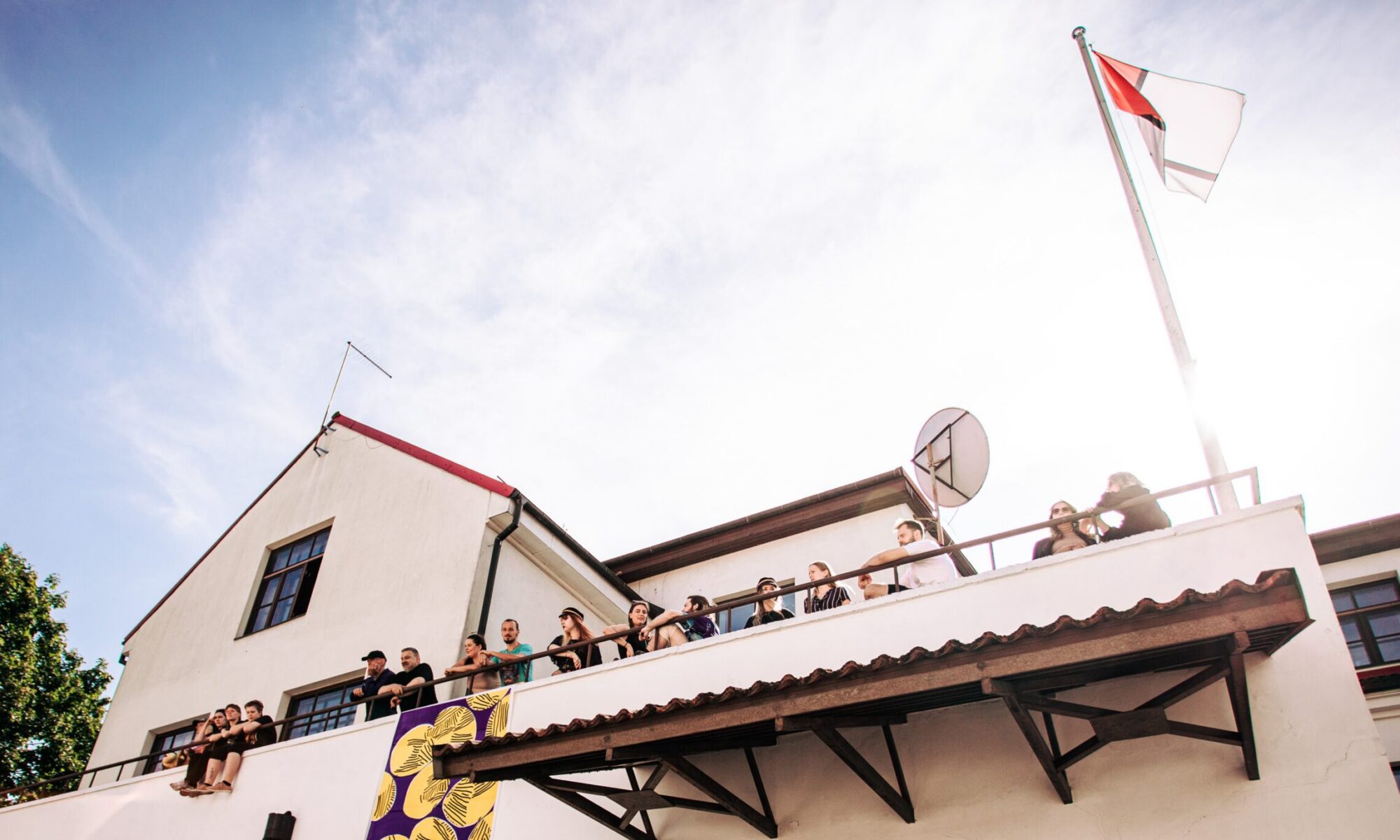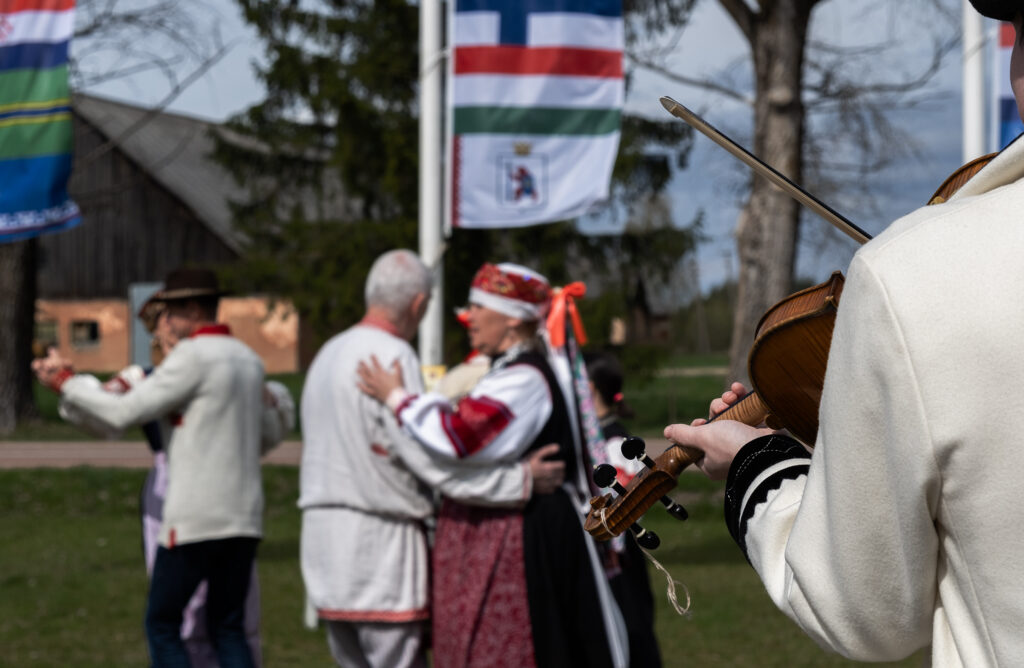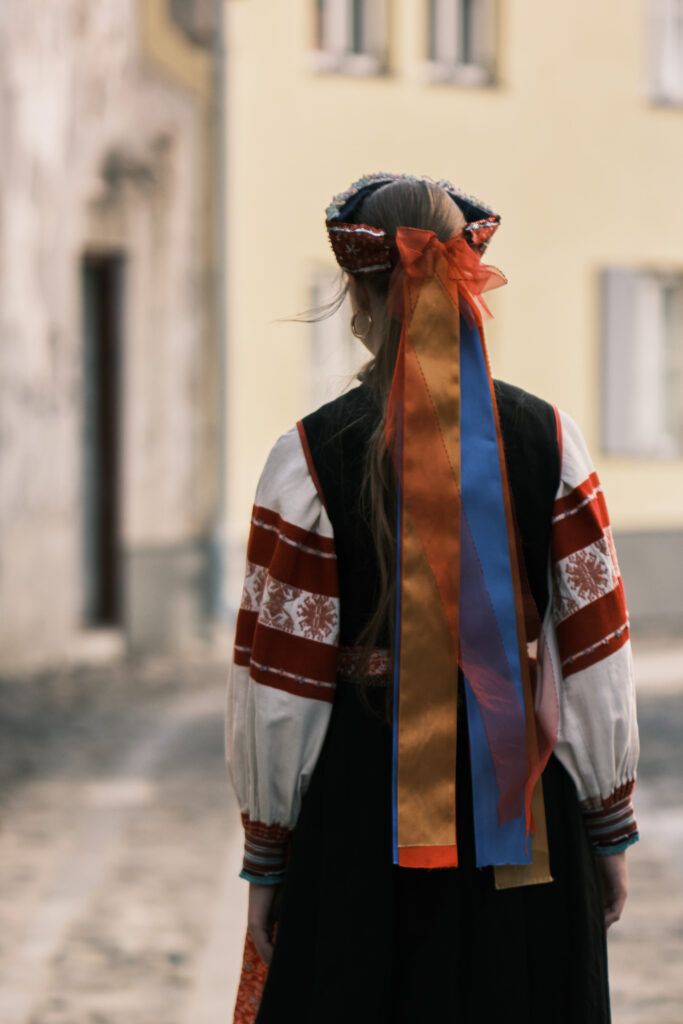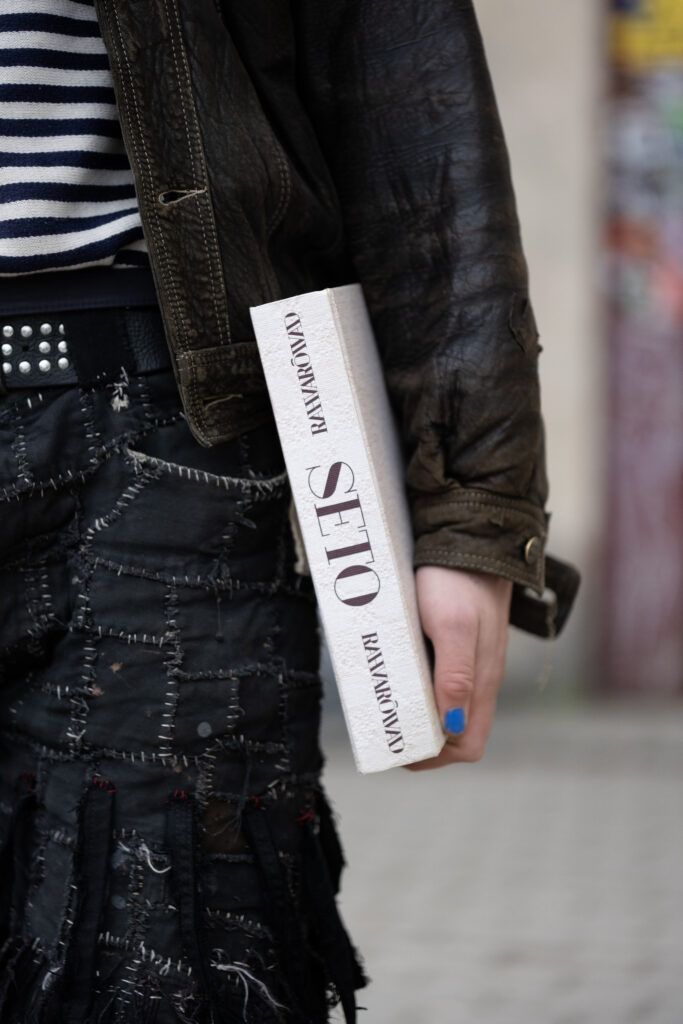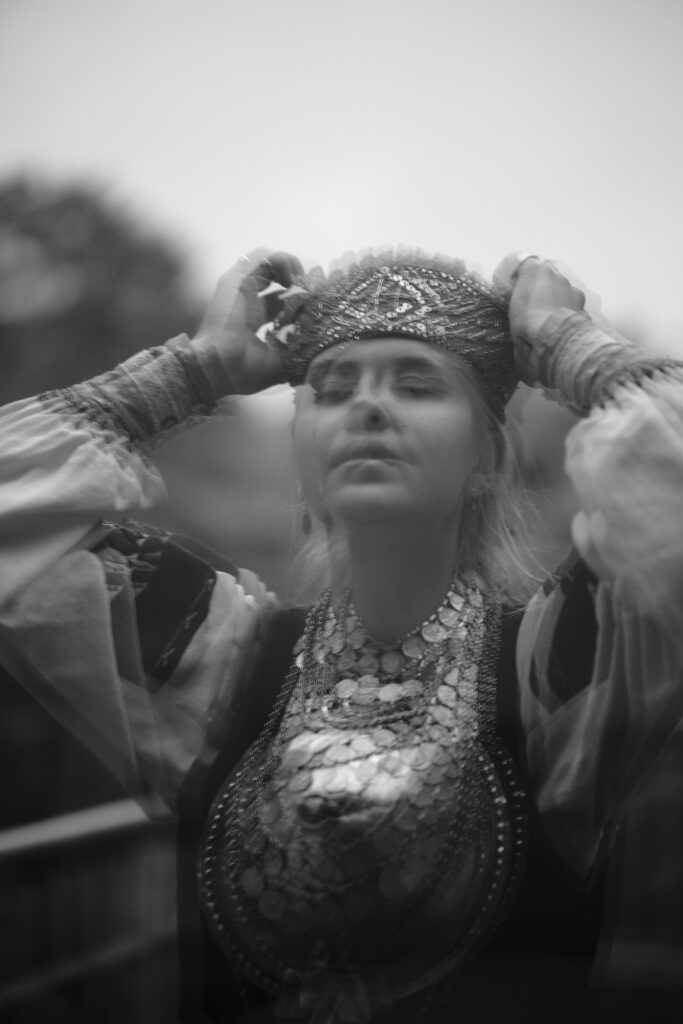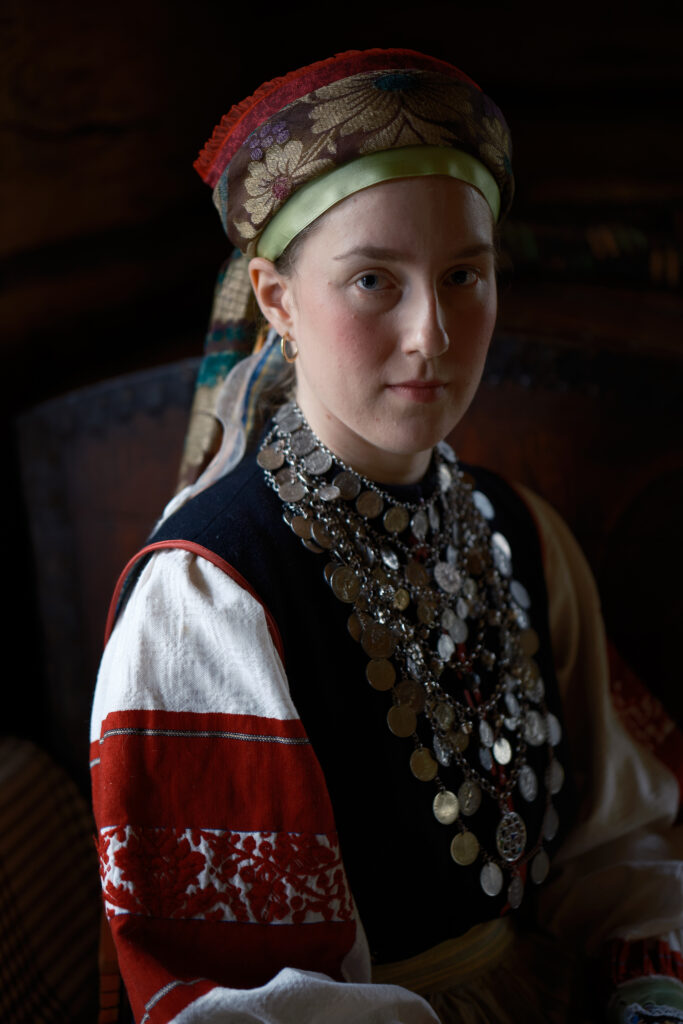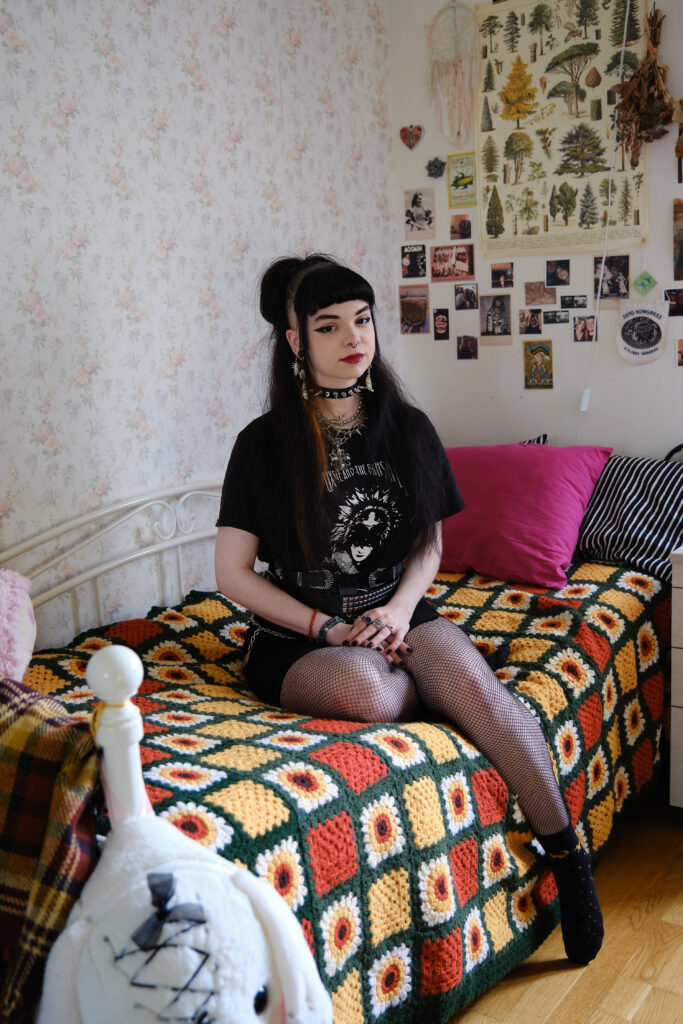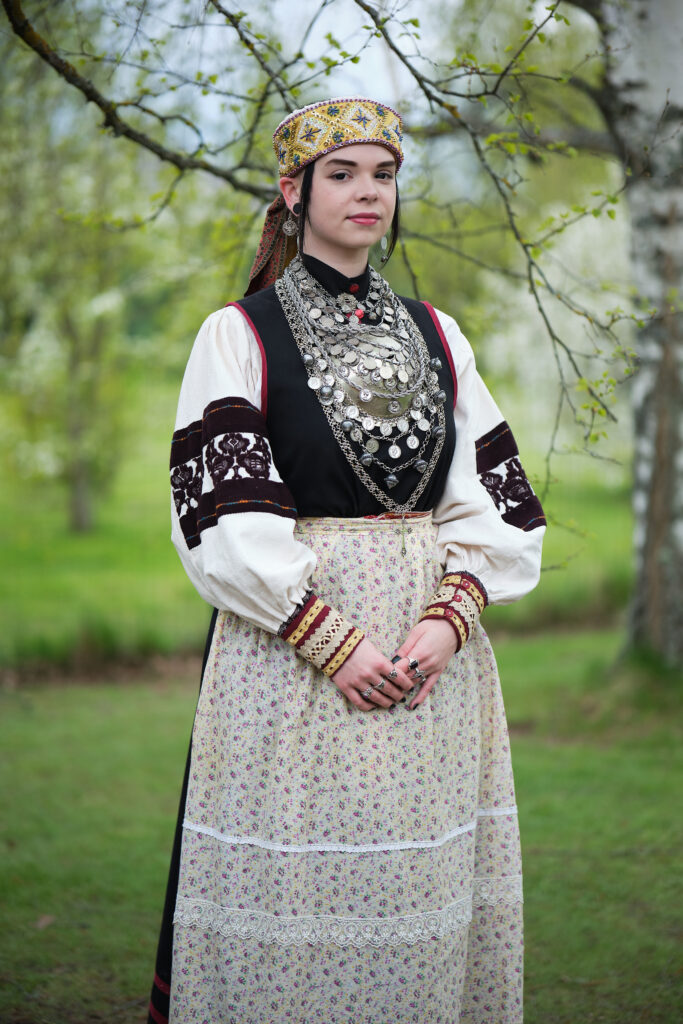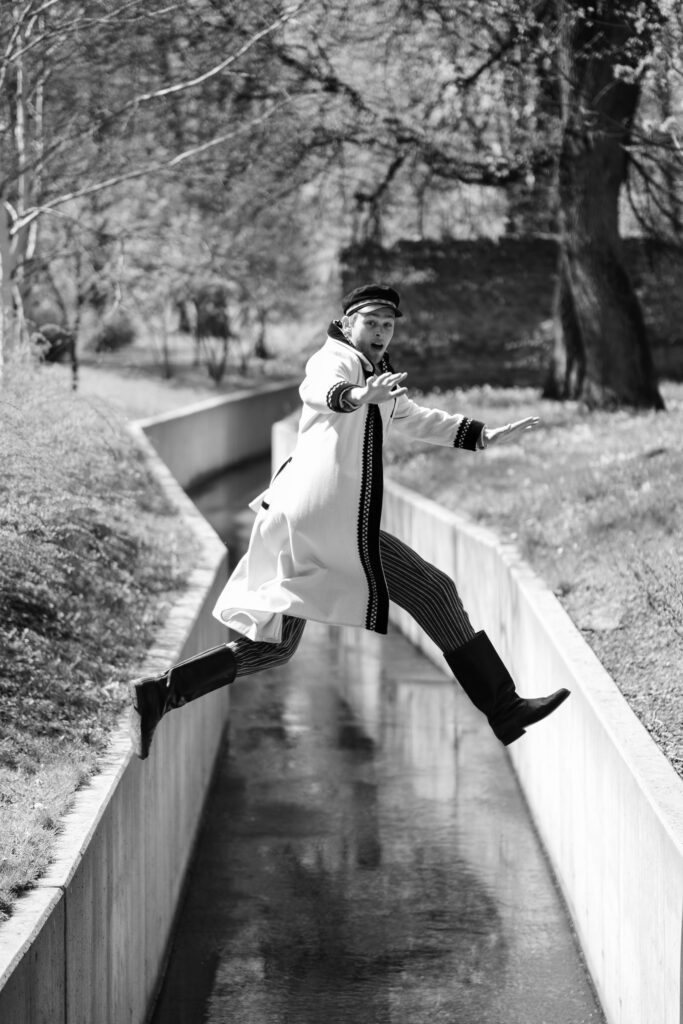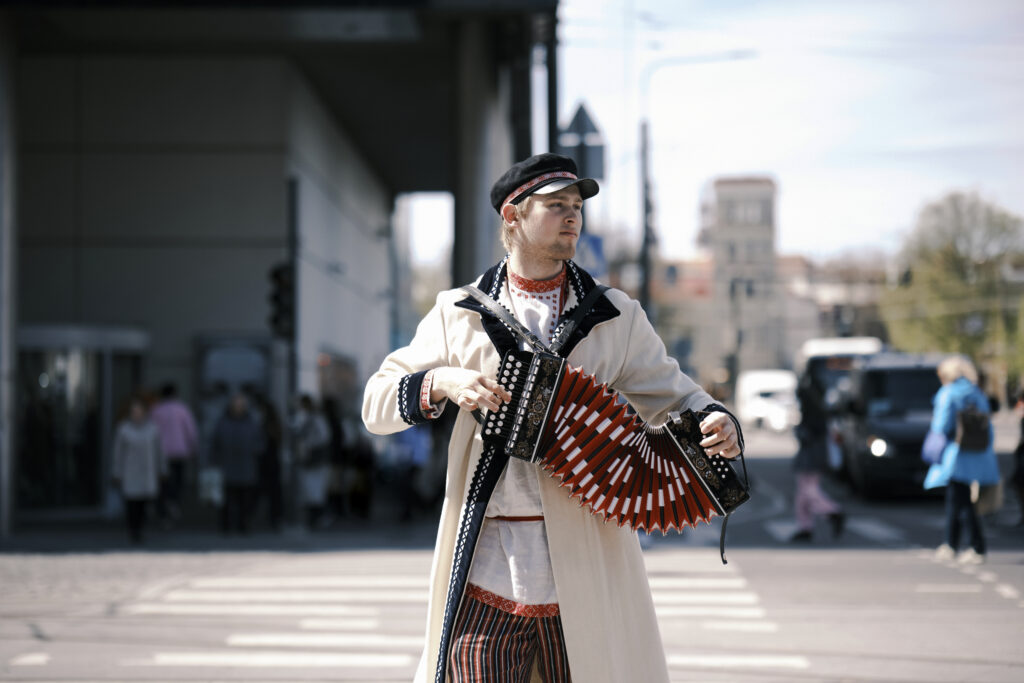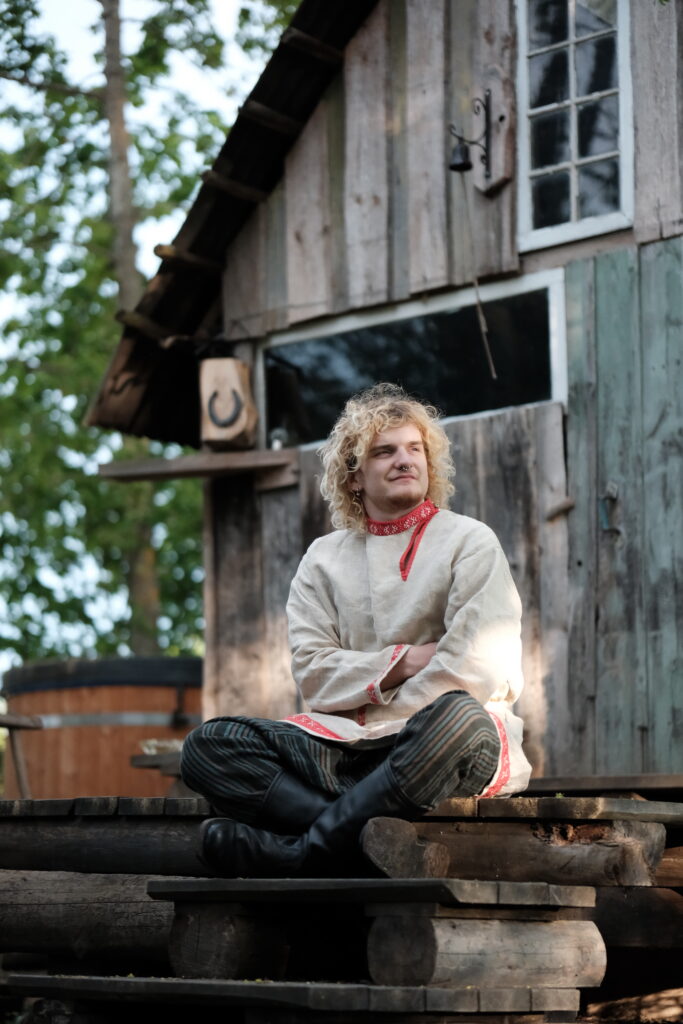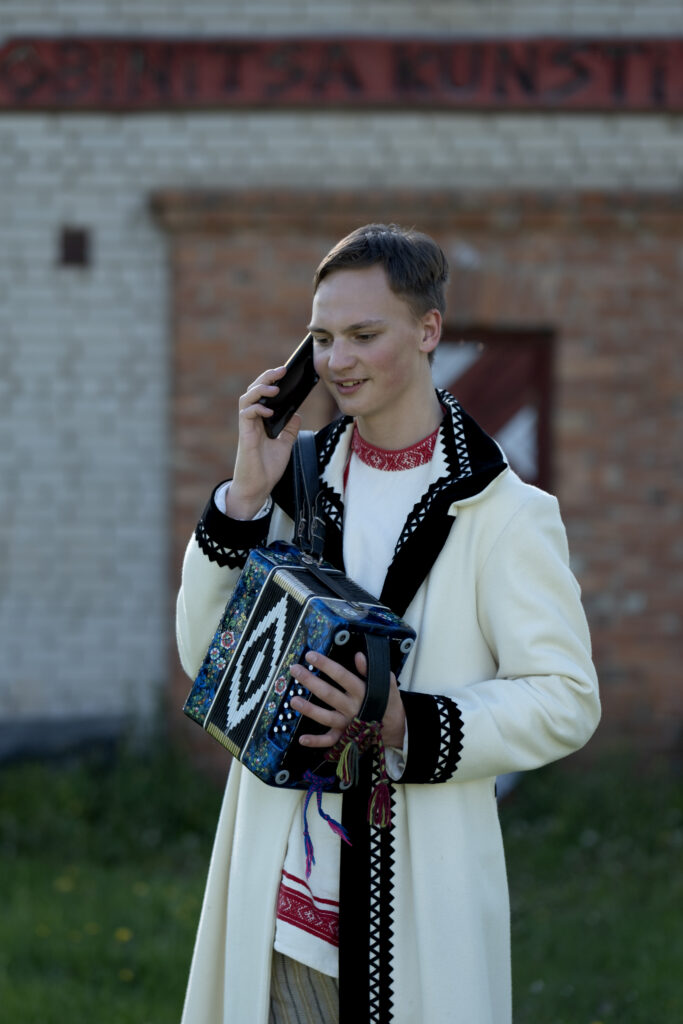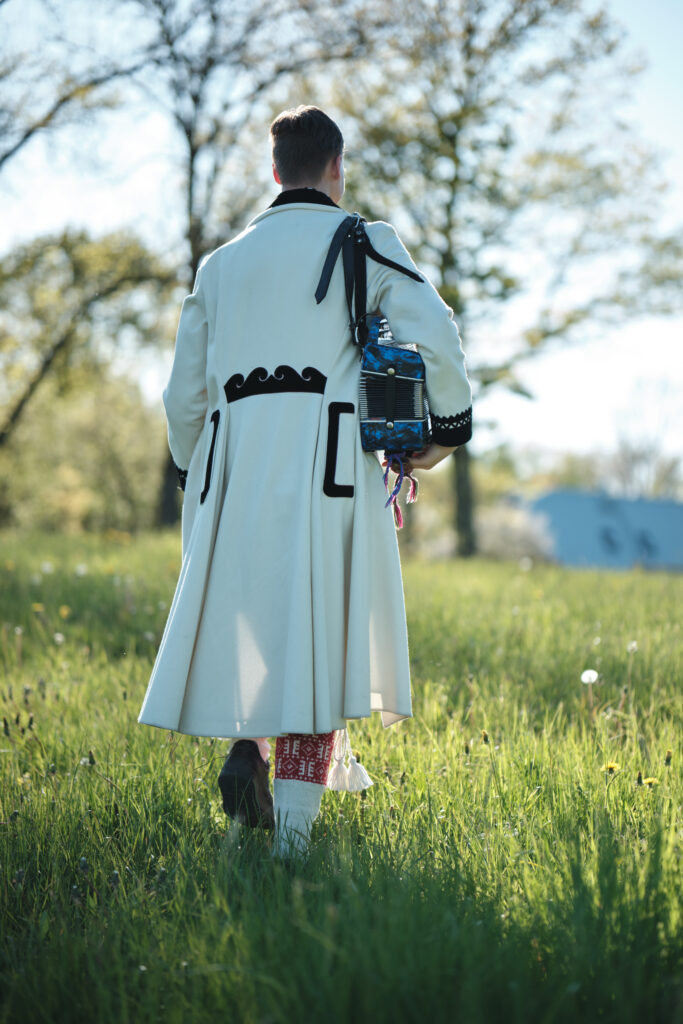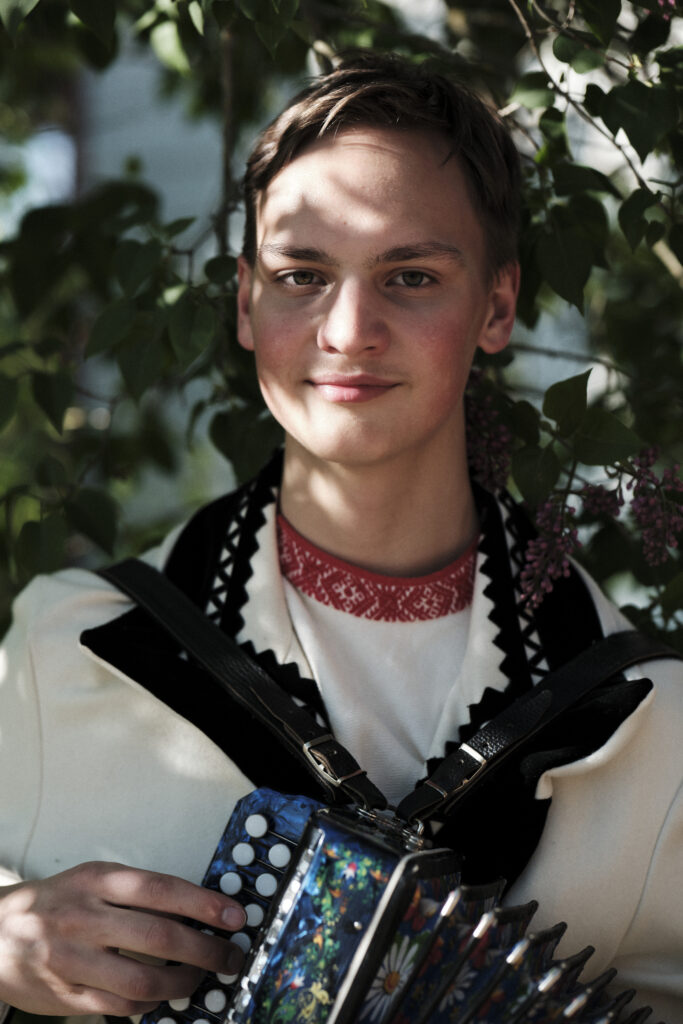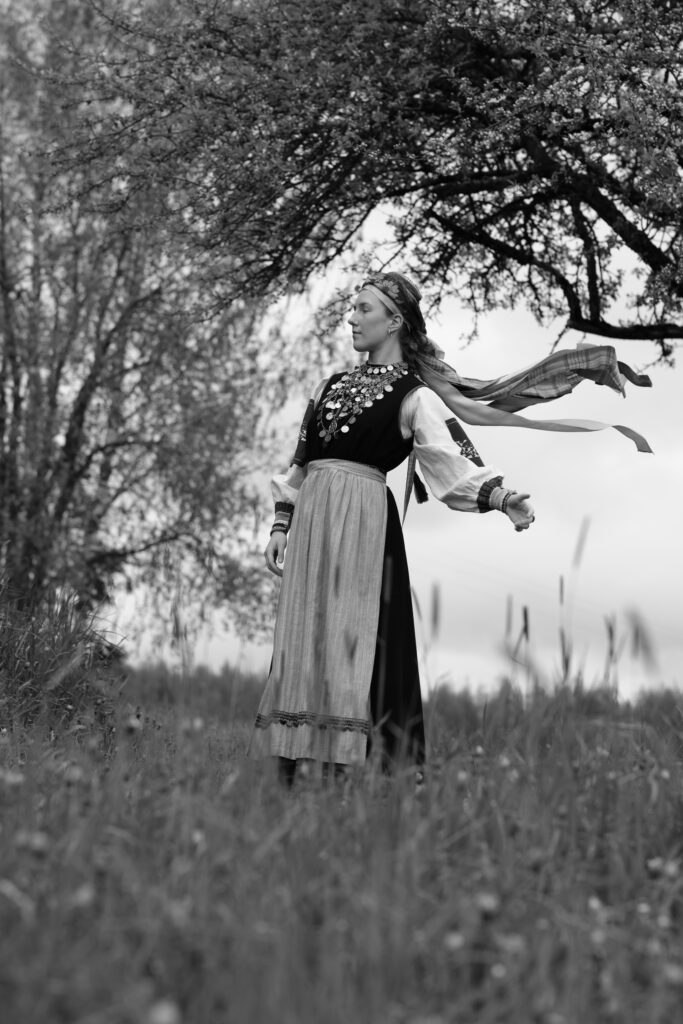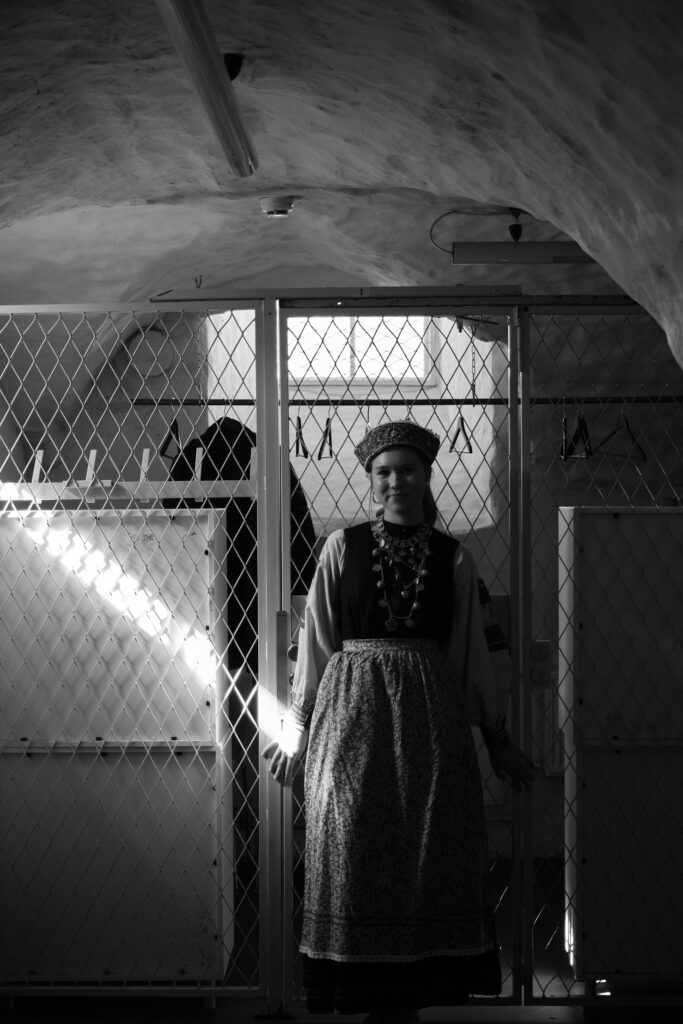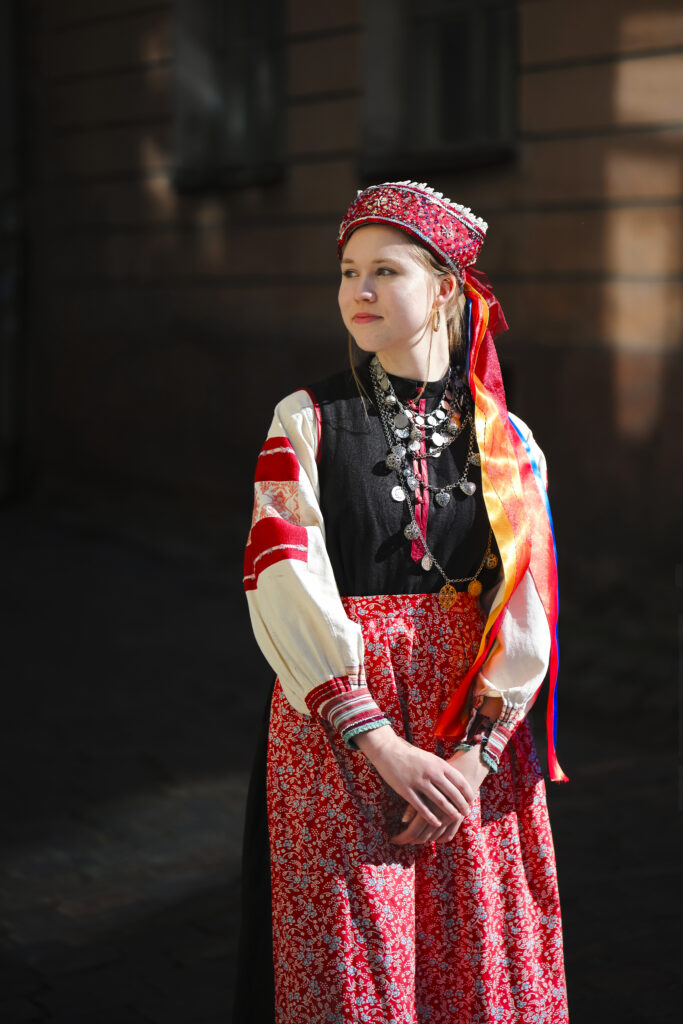Kasvasin üles paigas, kus seto keel, kombed ja kogukonnatunne olid elu loomulik osa. See maailm ei olnud minu jaoks midagi võõrast või kõrvalt vaadeldavat – see oli keskkond, mis mind kujundas.
Oma töös pöörasin pilgu Setomaa aktiivsete noorte poole, kellest suur osa on ka noorsootskadeks valitud ja kes liiguvad pärimuse ja tänapäeva keskel ja vahel. On ju nemad selles protsessis võtmetegijad. Mind huvitas, kuidas nad end selles pingeväljas positsioneerivad: kas nad tunnetavad end kultuuri kandjatena või on see roll neile antud? Läbi portreeseeriate ja intervjuude avasin noorte isiklikke suhteid oma päritolu ja identiteediga – jäädvustasin hetki, kus traditsioon ja tänapäev põimuvad. Lõputöö oli minu viis otsida vastuseid, aga ka anda nähtavust neile, kelle valikutest sõltub, kuidas Setomaa kultuur tulevikus elab.
–
I grew up in a place where the Seto language, customs and sense of community were a natural part of life. This world was not something foreign or observed from the outside for me – it was the environment that shaped me.
In this work, I turned my attention to the active young people of Setomaa, many of whom have also been chosen as Seto youth representatives and who navigate between tradition and modern life. After all, they are the key players in this process. I was interested in how they position themselves in this field of tension: do they feel like bearers of culture or has this role been assigned to them? Through a series of portraits and interviews, I explored the young people’s personal relationships with their heritage and identity – I captured moments where tradition and contemporary life intertwine. This work was my way of searching for answers, but also of giving visibility to those whose choices determine how Setomaa culture will live in the future.
